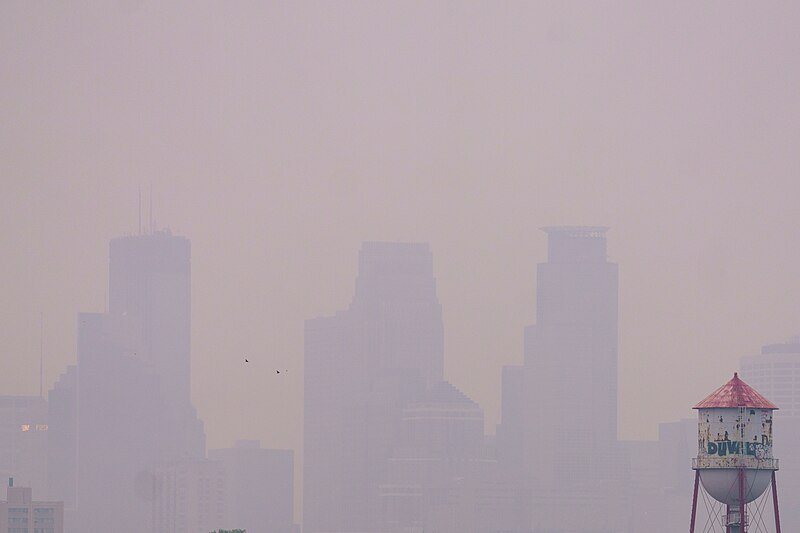Wildfires and Bad Air Quality - How does the Community Forestry Initiative Help?
Photo by Chad Davis - http://chaddavis.photography/ Canadian wildfire smoke in Minneapolis.
If you have spent any time outside this summer in Minnesota, you have likely experienced hazy skies and poor air quality. Wildfires in Canada brought thick plumes of smoke down across the state, causing dangerous conditions for people in sensitive groups.
The Community Forestry Initiative is working hard to keep people safe from environmental health risks such as bad air quality. By preserving and increasing tree canopy, members are increasing the amount of oxygen produced and removing air pollutants that contribute to health problems. The Minnesota Climate Action Framework, the official climate action plan for the State of Minnesota, sets a goal of achieving "30% overall tree canopy cover in Minnesota communities by 2030 and 40% by 2050.” As of 2023, many metro communities have only 15% tree canopy coverage or less.
Trees provide more than just a shady spot to rest on a hot sunny day. In addition to producing oxygen, lowering air temperature, and reducing erosion, trees work to remove pollutants like the fine particles found in smoke, as well as ozone and other dangerous gases. Whether trapping particulates on leaves and branches or converting ozone to less harmful gases, trees help reduce the impact of pollution on human health and help us to breathe easily.
It may have seemed like the trees weren’t doing their job when the entire metro sky was smokey and hazy, but without our current tree canopy, conditions would have been significantly worse and posed even bigger health risks. The City of St. Paul publishes their tree inventory online, along with their recent calculations for tree benefits. To put things into perspective – there are 129,103 publicly managed trees in St. Paul which remove 197,735 pounds of air pollution each year. That is a $607,153 annual value to the city.
Although air quality cannot be predicted, we know that over time climate change and warming temperatures may contribute to more wildfires and air quality issues. With options to focus on community forestry, home energy or building climate resilience, Climate Impact Corps offers many opportunities to become a force of nature for Minnesota. 26 members are still needed across the state to begin serving in October from areas in the Twin Cities to St. Cloud to Rochester.
Learn more about our open positions by visiting ampact.us/environment and be sure to apply by October 4!
Interested in learning more about the benefits of tree canopy?
Visit these websites:
St Paul TreeKeeper - to learn more about tree benefits such as carbon sequestered, energy saved, and stormwater runoff avoided.
Growing Shade - an interactive resource to inform tree canopy enhancement and preservation for the Twin Cities.
Map of Community Forestry Sites across the state. Members are working to help preserve and increase tree canopy.




